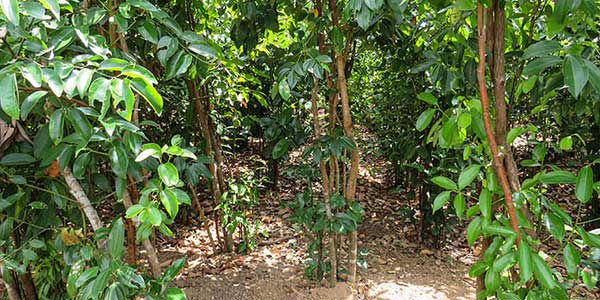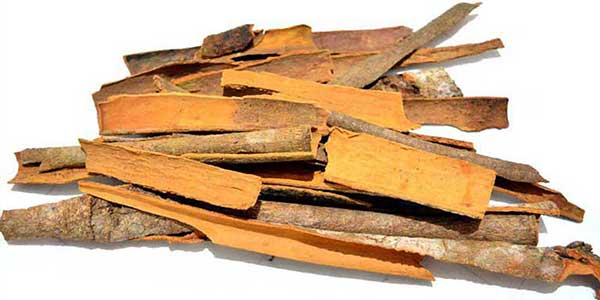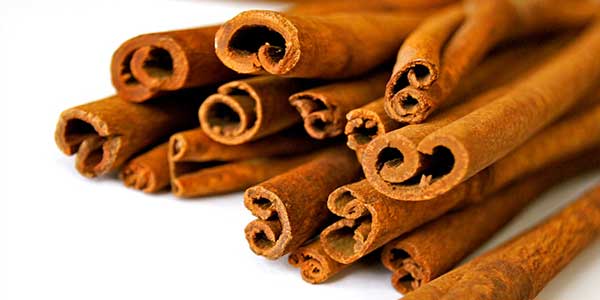Introduction
Cinnamon is a widely used spice known for its distinct aroma, warm flavor, and versatility in cooking. One of the common forms in which cinnamon is available is the cinnamon stick, also known as Dalchini. In this article, we will explore the details, uses, qualities, origin, sources, applications, health benefits, use in cooking, how to use, and potential side effects of cinnamon sticks. From its ancient roots to its culinary and medicinal uses, cinnamon sticks have been an essential ingredient in various cuisines around the world. Let’s delve into the world of cinnamon sticks and discover the wonders they have to offer.
I. Ingredient Details of Cinnamon Stick (Dalchini)
Cinnamon sticks are obtained from the bark of trees belonging to the Cinnamomum genus. The most common type of cinnamon used for making cinnamon sticks is Cinnamomum verum or Ceylon cinnamon. The bark is harvested from the cinnamon tree, and the outer woody part is stripped away, leaving behind the inner layer, which curls naturally into sticks as it dries. These sticks are then used for various culinary and medicinal purposes.
Cinnamon sticks are known for their warm and aromatic flavor profile. They have a sweet and slightly spicy taste, which adds depth and richness to dishes. The sticks are typically brown in color with a rough texture. They are known for their fragrant aroma, which becomes more pronounced when the sticks are crushed or ground.
II. Qualities and Characteristics of Cinnamon Stick (Dalchini)
Cinnamon sticks possess several notable qualities and characteristics that make them a popular spice in the culinary world. Here are some key qualities of cinnamon sticks:
Aromatic: Cinnamon sticks have a rich and inviting aroma that is both sweet and spicy. The scent can fill a room and enhance the sensory experience of cooking and baking.
Warm Flavor: The flavor of cinnamon sticks is warm and comforting, with hints of sweetness and a subtle spiciness. It adds depth and complexity to dishes, making it a versatile ingredient in both sweet and savory recipes.
Versatility: Cinnamon sticks can be used in various forms, including whole sticks, ground powder, or as an infusion. This versatility allows for different applications and methods of incorporating cinnamon flavor into dishes.
Long Shelf Life: Cinnamon sticks have a relatively long shelf life if stored properly. They can retain their flavor and aroma for up to two years when stored in an airtight container in a cool and dry place.
Visual Appeal: Cinnamon sticks add visual appeal to dishes with their distinctive shape and texture. They can be used as a garnish or left to simmer in liquids to infuse their flavor.

III. Origin and Sources of Cinnamon Stick (Dalchini)
Cinnamon has a rich history that dates back thousands of years. It is believed to have originated in Sri Lanka (formerly known as Ceylon), where the Ceylon cinnamon variety is native. Ceylon cinnamon is considered to be of high quality and is known for its delicate and complex flavor.
Apart from Sri Lanka, cinnamon is also grown and sourced from other regions, including Indonesia, China, Vietnam, and India. These regions produce different varieties of cinnamon with slight variations in flavor and aroma.
Cinnamon sticks are sourced from the bark of cinnamon trees, which are typically grown in tropical climates. The bark is carefully harvested and processed to obtain the cinnamon sticks. Today, cinnamon sticks are widely available in supermarkets, spice markets, and online stores. It’s important to choose reputable brands or suppliers that source their cinnamon sticks from reliable and sustainable sources to ensure quality and authenticity.
IV. Uses and Applications of Cinnamon Stick (Dalchini)
Cinnamon sticks have a wide range of uses and applications in culinary preparations. They are commonly used in both sweet and savory dishes to add flavor, aroma, and visual appeal. Here are some popular uses and applications of cinnamon sticks:
Infused Beverages: Cinnamon sticks are often used to infuse hot beverages like tea, coffee, and hot chocolate. They impart a warm and comforting aroma and flavor to the drinks.
Mulled Drinks: Cinnamon sticks are an essential ingredient in mulled wine and spiced cider. They are simmered along with other spices and ingredients to create a flavorful and aromatic beverage.
Stews and Curries: Cinnamon sticks are commonly used in stews, curries, and braised dishes to add depth and complexity to the flavors. They are added during the cooking process and removed before serving.
Rice Dishes: Cinnamon sticks can be used to flavor rice dishes, such as pilaf or biryani. They are added to the cooking liquid to infuse the rice with their aromatic flavor.
Baking: Cinnamon sticks are often ground into a fine powder and used in baking recipes. They are a key ingredient in cinnamon rolls, cakes, cookies, and pastries, adding a warm and fragrant flavor to the baked goods.
Spice Blends: Cinnamon sticks are included in various spice blends, such as garam masala, pumpkin spice, and chai masala. These blends are used to season a wide range of dishes and beverages.
Desserts and Sweets: Cinnamon sticks are commonly used in desserts and sweets. They are added to fruit compotes, poached fruits, and desserts like rice pudding or custard to enhance the flavor.
Potpourri and Home Fragrance: Cinnamon sticks can be used to create natural potpourri or homemade air fresheners. They release a pleasant fragrance when placed in a bowl or simmered in water with other aromatic ingredients.

V. Health Benefits of Cinnamon Stick (Dalchini)
Cinnamon sticks not only add flavor to dishes but also offer potential health benefits. Here are some notable health benefits associated with cinnamon sticks:
Antioxidant Properties: Cinnamon sticks are rich in antioxidants, which help protect the body against oxidative stress caused by free radicals. Antioxidants contribute to overall health and may help reduce the risk of chronic diseases.
Anti-Inflammatory Effects: Cinnamon contains compounds with anti-inflammatory properties, which may help reduce inflammation in the body. Chronic inflammation is linked to various health conditions, and consuming cinnamon sticks may contribute to its management.
Blood Sugar Control: Cinnamon has been studied for its potential to help regulate blood sugar levels. It may improve insulin sensitivity and contribute to better blood glucose control, particularly in individuals with diabetes or insulin resistance.
Heart Health: Some research suggests that cinnamon may have beneficial effects on heart health. It may help lower cholesterol levels, triglycerides, and blood pressure, thereby reducing the risk of heart disease.
Digestive Aid: Cinnamon has traditionally been used as a digestive aid. It may help relieve indigestion, bloating, and flatulence. Additionally, cinnamon sticks have antimicrobial properties that may help fight against certain types of bacteria.
Potential Anti-Cancer Properties: Certain compounds found in cinnamon have shown potential anticancer effects in laboratory studies. However, further research is needed to understand their efficacy and safety in human subjects.
Brain Health: Cinnamon may have cognitive-enhancing properties and help improve brain function. It has been studied for its potential role in reducing the risk of neurodegenerative diseases like Alzheimer’s and Parkinson’s.
Anti-Microbial Properties: Cinnamon sticks possess antimicrobial properties that may help inhibit the growth of bacteria and fungi. This can contribute to improved oral health and help prevent infections.
Weight Management: Cinnamon may aid in weight management by regulating blood sugar levels and reducing cravings. It may also increase metabolism, leading to improved fat burning.
VI. Use of Cinnamon Stick (Dalchini) in Cooking and How to Use
Cinnamon sticks are versatile and can be used in various ways in cooking. Here are some tips on how to use cinnamon sticks effectively:
Infusing Liquids: Add cinnamon sticks to hot liquids like tea, coffee, or milk to infuse them with flavor. Simmer the liquid with the cinnamon sticks for a few minutes and remove them before serving.
Cooking with Stews and Soups: Add cinnamon sticks to stews, soups, and curries during the cooking process. The sticks release their flavor and aroma as the dish simmers. Remember to remove them before serving.
Baking: Grind cinnamon sticks into a fine powder using a spice grinder or mortar and pestle. Use the ground cinnamon in baking recipes like cakes, cookies, muffins, or bread for a warm and fragrant flavor.
Spice Blends: Incorporate ground cinnamon into spice blends like garam masala, pumpkin spice, or chai masala. These blends can be used to season a variety of dishes, both sweet and savory.
Flavoring Rice Dishes: Add a cinnamon stick to the cooking liquid when preparing rice dishes like pilaf, biryani, or rice pudding. The cinnamon stick infuses the rice with its flavor during the cooking process.
Garnish and Decoration: Use cinnamon sticks as a garnish or decoration for desserts, drinks, or holiday dishes. They can be used to add visual appeal and a hint of cinnamon aroma.
Remember to adjust the quantity of cinnamon sticks based on your taste preferences and the specific recipe requirements. Start with a small amount and gradually increase if desired. Cinnamon sticks are typically removed before serving the dish, as they can be quite strong if left in for an extended period.

VII. Side Effects and Precautions of Cinnamon Stick (Dalchini)
While cinnamon sticks are generally safe to consume, there are a few considerations and potential side effects to be aware of:
Allergies: Some individuals may be allergic to cinnamon. If you experience symptoms such as itching, swelling, or difficulty breathing after consuming cinnamon, discontinue use and seek medical attention.
Coumarin Content: Cassia cinnamon, often used in cinnamon sticks, contains a compound called coumarin. High intake of coumarin may have potential side effects, including liver toxicity. If you consume large amounts of cinnamon regularly, it’s advisable to opt for Ceylon cinnamon, which has lower coumarin levels.
Interactions with Medications: Cinnamon may interact with certain medications, particularly those that affect blood sugar levels. If you’re taking medications for diabetes or blood-thinning medications, consult with your healthcare provider before consuming large amounts of cinnamon or taking cinnamon supplements.
Pregnancy and Breastfeeding: Pregnant or breastfeeding women should exercise caution and moderate their consumption of cinnamon. Large amounts of cinnamon or cinnamon supplements are not recommended during these periods.
Stomach Sensitivity: Some individuals may experience stomach discomfort, heartburn, or irritation from consuming cinnamon. If you have a sensitive stomach or a history of gastrointestinal issues, it’s best to moderate your intake or consult with a healthcare professional.
Conclusion
Cinnamon sticks, also known as Dalchini, are a versatile spice that adds a warm and aromatic flavor to a wide range of dishes. From beverages to desserts and savory preparations, cinnamon sticks have a multitude of culinary applications. Alongside their culinary uses, cinnamon sticks offer potential health benefits, including antioxidant properties, anti-inflammatory effects, blood sugar control, and digestive aid. However, it’s important to be mindful of potential side effects and exercise moderation, particularly for individuals with specific health conditions or allergies. Incorporating cinnamon sticks into your cooking can elevate the taste and aroma of your dishes while potentially enhancing your overall well-being.